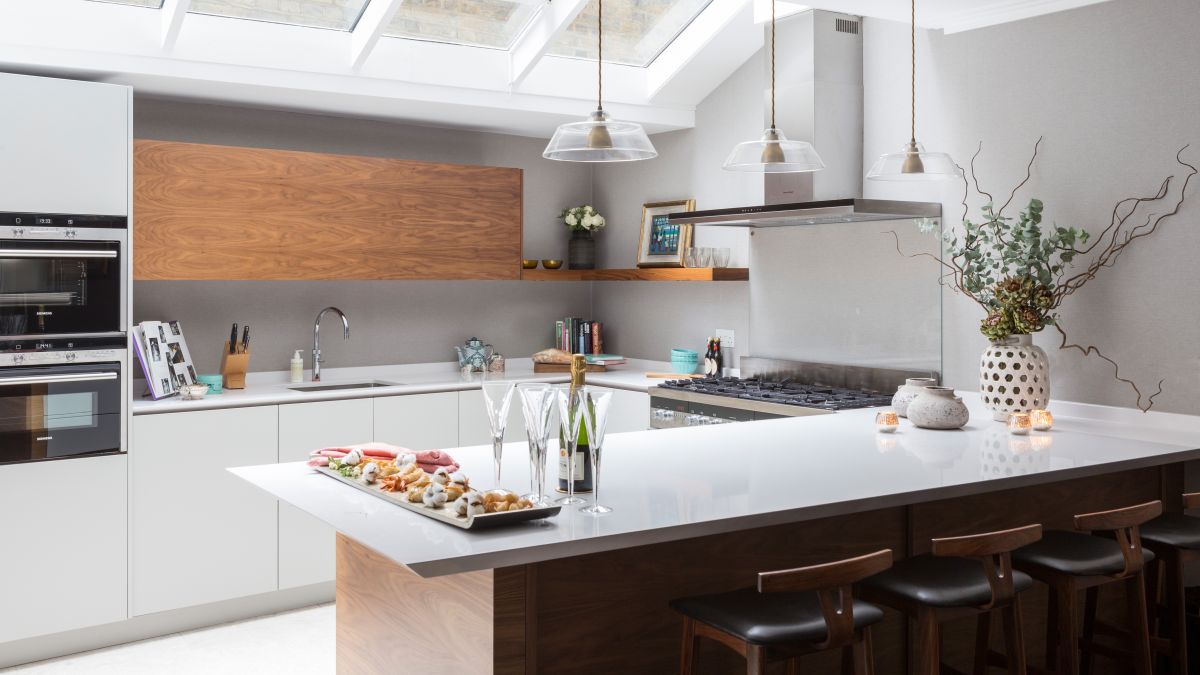
Problems in Modular kitchen lighting and how to prevent them?
Kitchens must be extremely practical rooms since they serve multiple purposes, including cooking, eating, and entertaining. As a result, even if adequate task lighting is crucial, we think kitchen lighting should also be cozy and even attractive. Kitchens with poor illumination can become uninspiring and challenging to operate in. The kitchen is the social hub of the house, so let’s examine common lighting faults there and how to avoid them.
#1 The down lighting grid
A lot is happening in a kitchen, possibly more than in any other area. There might be distinct zones for cooking, eating, relaxing out, and preparing food. Avoid the first mistake: The Grid of Downlights. Delivering the proper amount and quality of light to each location is vital. Even while drawing a grid of downlights simply, it’s not the best idea. Your room will lose its personality and structure, and you’ll be less able to zone it, but even worse, the light will invariably end up in the wrong spot.
This may result in shadows over work spaces, uncomfortable lighting near cabinets, etc. The most important thing to learn from this is that you cannot design your lighting if your working plan for your kitchen design has not been finalized.
#2 The best thing is to layer the lighting
People sometimes go overboard and light everything when there is a lot to light and they are worried about under-lighting their kitchens. The best way to think about lighting is in layers, with job lighting, and dining lighting highlighting significant elements. If you light everything, the kitchen’s personality and shape are lost. Consider the primary working, dining, and entertainment spaces in the kitchen and the key features before lighting them.
#3 Using insufficient circuits
Zoning is crucial in the kitchen and other connected spaces. It provides definition and facilitates the creation of appropriate intimate or entertaining spaces in addition to adequate task lighting. The capacity to treat distinct zones differently is seriously hampered by the use of too few circuits, which results in a considerably blander architecture.
#4 Use high-quality lights and fixtures
It’s difficult to convey this in writing since you might not see it unless you’re staring at the terrible light that cheap LED fixtures emit. The issue is that your plan might be too late at that point. We think that the quality of the fixtures used in any project is crucial, but it’s especially crucial in the kitchen. The quality of the lighting and accurate color will significantly alter the outcome. It is crucial to have good quality and color of light when cooking or dining. Using high-quality lighting fixtures is the definition of good lighting. Not all LED lighting is made equal.
#5 Removing the downtrend from the kitchen cabinets
This is more of a case of integrated thinking. Good lighting is essential in kitchens and should be taken into account when designing a kitchen. Under-unit lighting will appear unfinished if a downstand is not used. Plan for under-lighting units if you choose to do so when designing the units.
#6 You’re Relying On One Light Source
When designing the lighting for your kitchen, layer your lighting plan. There are four layers total in the layering technique: ambient, task, focus, and ornamental layers. Place extra light sources where you see fit throughout your kitchen while keeping this method in mind.
#7 Forgetting About Your Natural Light Source
The natural light source in your kitchen is blocked by a piece of furniture or drapes. Start with natural light and then add more fixtures to your space to complete the look. Buy blinds or drapes that are simple to open so you can take advantage of as much natural light as possible. Adding skylights is an attractive (albeit slightly more expensive) solution.
#8 Not adding dimmer switches
The issue with your kitchen lighting arrangement is that it is either way too bright or very dark. As a general rule, place dimmers in every room, particularly your kitchen. It can be uncomfortable and downright annoying to be in a room that is either too bright or not light enough (particularly when you’re dining). You can adjust the illumination in each room better by using dimmer switches. Dimmers help you save money, are less harmful to the environment, and are ideal for use with chandeliers, pendant lights, recessed lights, accent lighting, and ceiling fans.
#9 Beyond Food Preparation
Kitchen illumination is used for more than just food preparation. Your kitchen is frequently the spot where people congregate to entertain guests, attend family gatherings, or even do business. You’ll be well on your way to creating a more welcoming and beautiful area if you keep these suggestions in mind while constructing or revamping your kitchen.
By carefully considering how the space will be utilized and with proper planning lighting mistakes can be avoided. For more information on LeFreddo’s approach to kitchen lighting http://www.lefreddo.com/modular-kitchen-in-salem/
